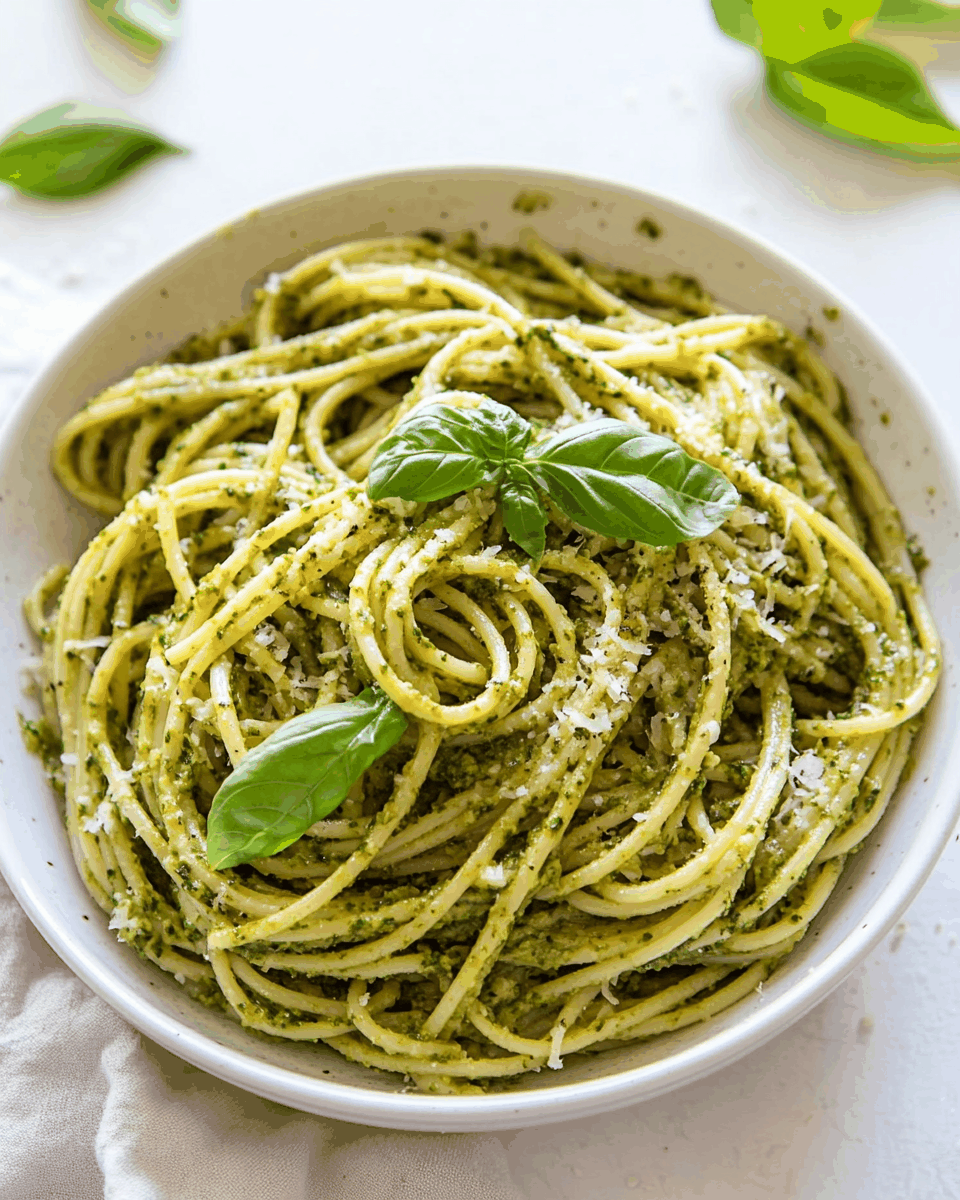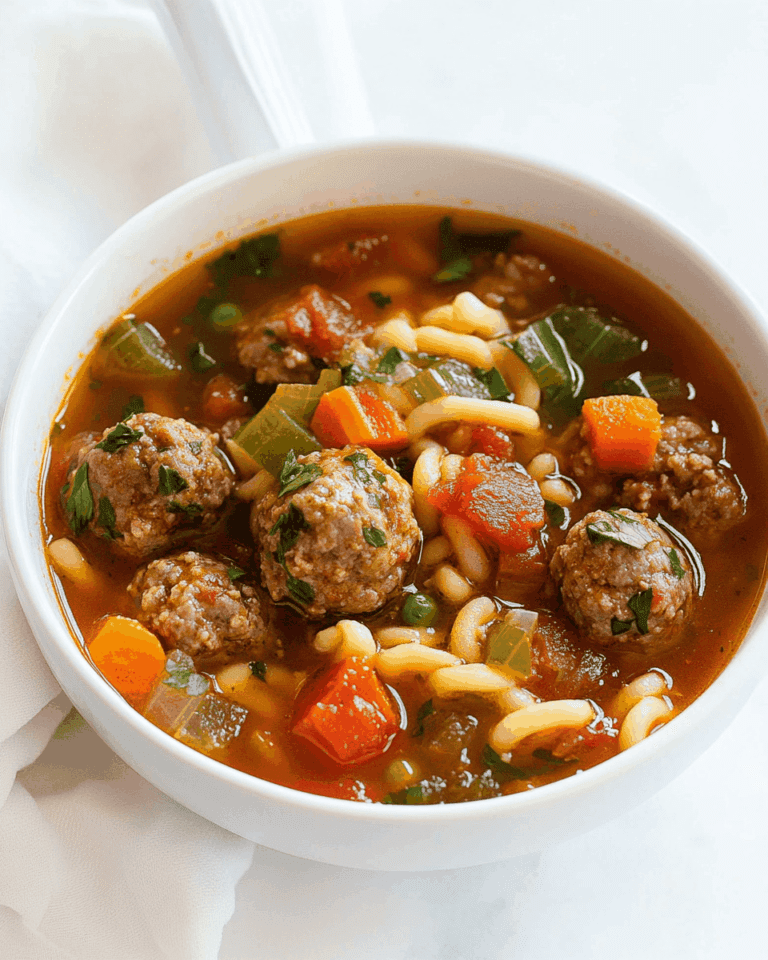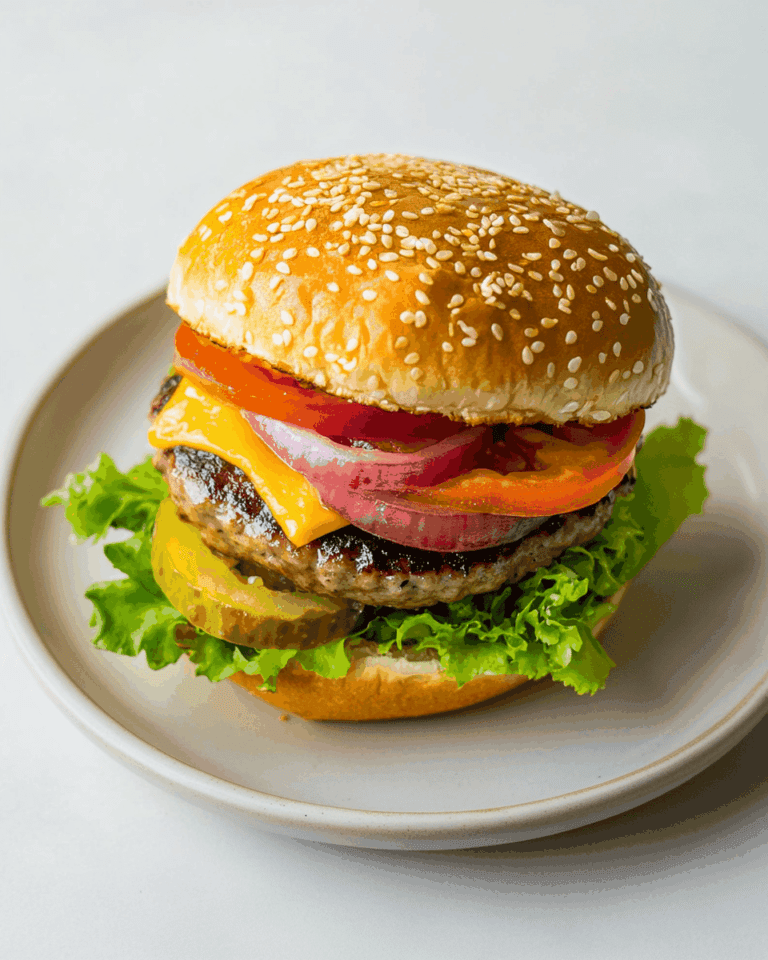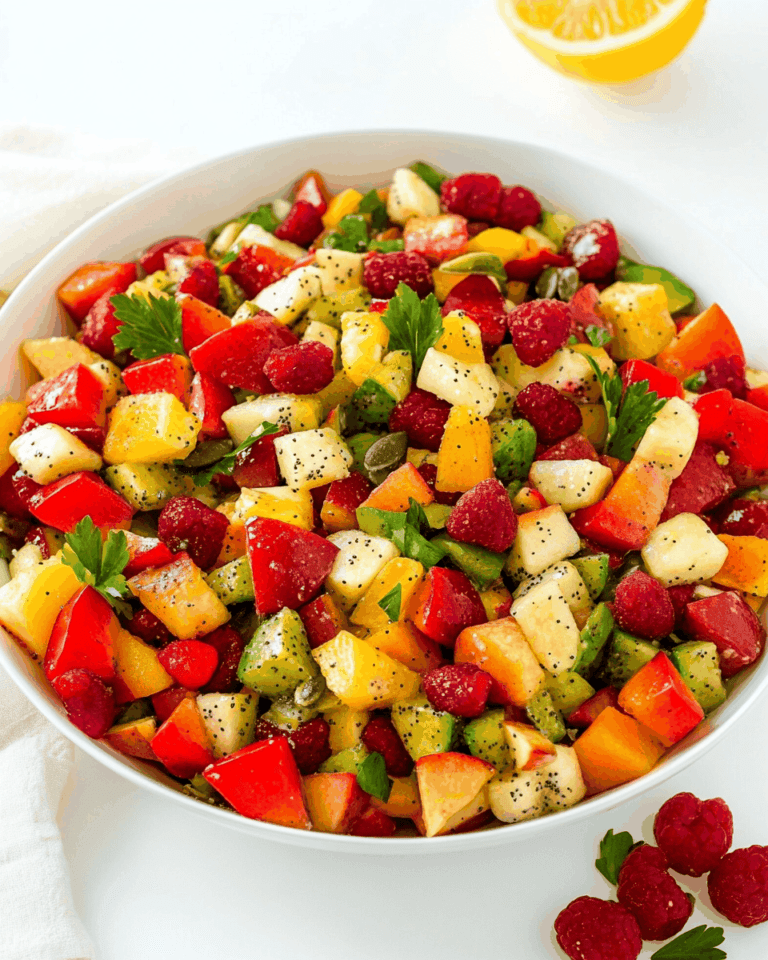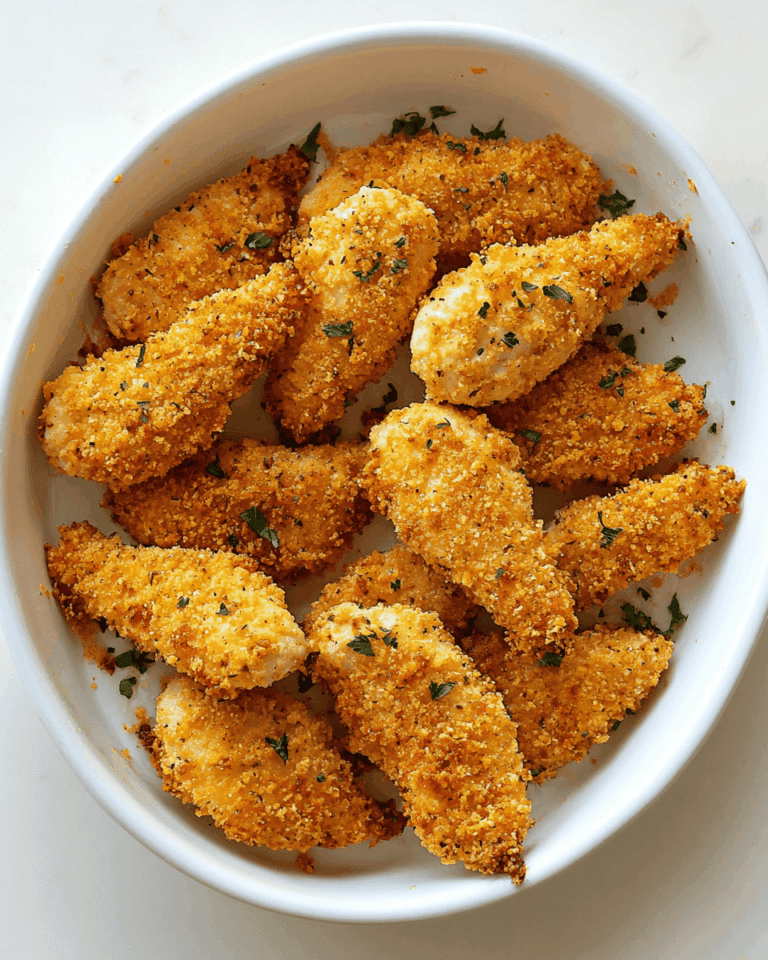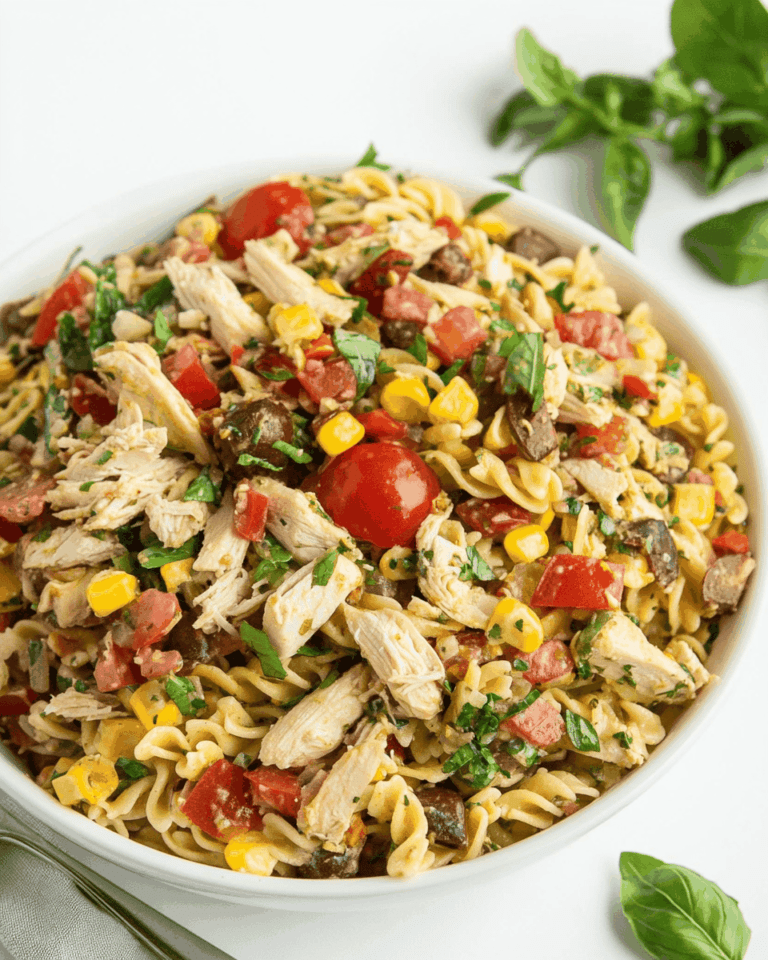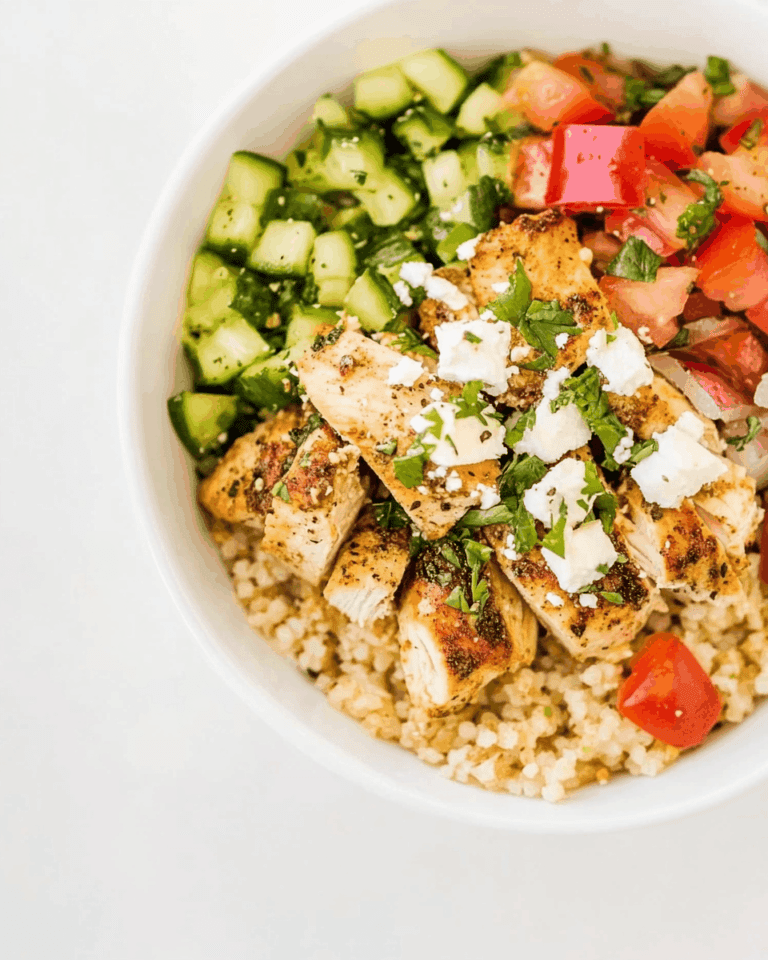Pesto Pasta
Pesto pasta is a vibrant and flavorful dish that captures the essence of Italian cuisine. At its core, this recipe combines perfectly cooked pasta with a rich and aromatic basil pesto sauce. The beauty of pesto pasta lies in its simplicity: fresh ingredients come together to create a dish that is both quick to prepare and incredibly satisfying. Traditionally, pesto is made with fresh basil, garlic, pine nuts, Parmesan cheese, and olive oil, resulting in a sauce that is bursting with flavor and offers a delightful contrast to al dente pasta. This dish can be served as a main course or a side, making it versatile for any occasion. Whether you are hosting a dinner party or enjoying a casual lunch at home, pesto pasta is sure to impress. With its stunning green hue and aromatic scent, it appeals not only to the palate but also to the eyes. In this article, you will find everything you need to create your own perfect pesto pasta, from the essential ingredients to step-by-step instructions, along with tips for variations and serving suggestions. Get ready to elevate your pasta game with this classic recipe that is bound to become a family favorite.
Why You’ll Love This Recipe?
There are several reasons why pesto pasta stands out as a beloved dish. First and foremost is the incredible flavor profile that the pesto sauce brings to the pasta. The combination of fresh basil, garlic, and Parmesan creates a savory explosion that elevates the dish to a new level. Second, the ease of preparation is another highlight; making pesto requires minimal cooking skills, and the entire dish can be ready in under 30 minutes. This makes it an ideal option for busy weeknights or spontaneous gatherings. Additionally, the vibrant green color of the pesto sauce adds an appealing visual element, making your plate look as good as it tastes. Lastly, pesto pasta is highly adaptable, allowing you to incorporate seasonal vegetables, proteins, or even different types of pasta, giving you the freedom to customize it to your taste preferences and dietary needs. With its blend of flavor, simplicity, visual appeal, and versatility, pesto pasta is truly a dish that everyone will love.
Ingredients:

To create a mouthwatering pesto pasta, you will need a selection of fresh ingredients that enhance both the flavor and texture of the dish. Here’s a comprehensive list of what you’ll need:
- 400 grams of pasta (spaghetti, fusilli, or your favorite shape) – The type of pasta you choose can influence the overall experience. Long pasta like spaghetti allows the sauce to cling beautifully, while shorter shapes like fusilli capture the pesto in their spirals.
- 2 cups of fresh basil leaves – Use young and vibrant leaves for a bright flavor. Basil is the star ingredient in pesto, providing its characteristic aroma and taste.
- 2-3 cloves of garlic – Fresh garlic adds a pungent kick to the pesto. Adjust the quantity based on your preference for garlic intensity.
- 1/4 cup of pine nuts – These nuts contribute a creamy texture and nutty flavor to the pesto. Lightly toasting them can enhance their taste.
- 1/2 cup of freshly grated Parmesan cheese – The cheese adds depth and richness to the sauce. For the best flavor, use high-quality cheese and grate it yourself.
- 1/2 cup of extra virgin olive oil – This oil is essential for emulsifying the pesto and adding richness. Choose a good-quality oil for the best flavor.
- Salt and freshly cracked black pepper – These seasonings enhance the overall taste of the dish. Use them to taste, keeping in mind that Parmesan cheese is already salty.
- Optional: Cherry tomatoes or arugula for garnish – Fresh cherry tomatoes can provide a burst of sweetness, while arugula adds a peppery note and vibrant color.
Gathering these ingredients will set the stage for creating a delicious pesto pasta that is sure to impress your family and friends.
How To Make Pesto Pasta?
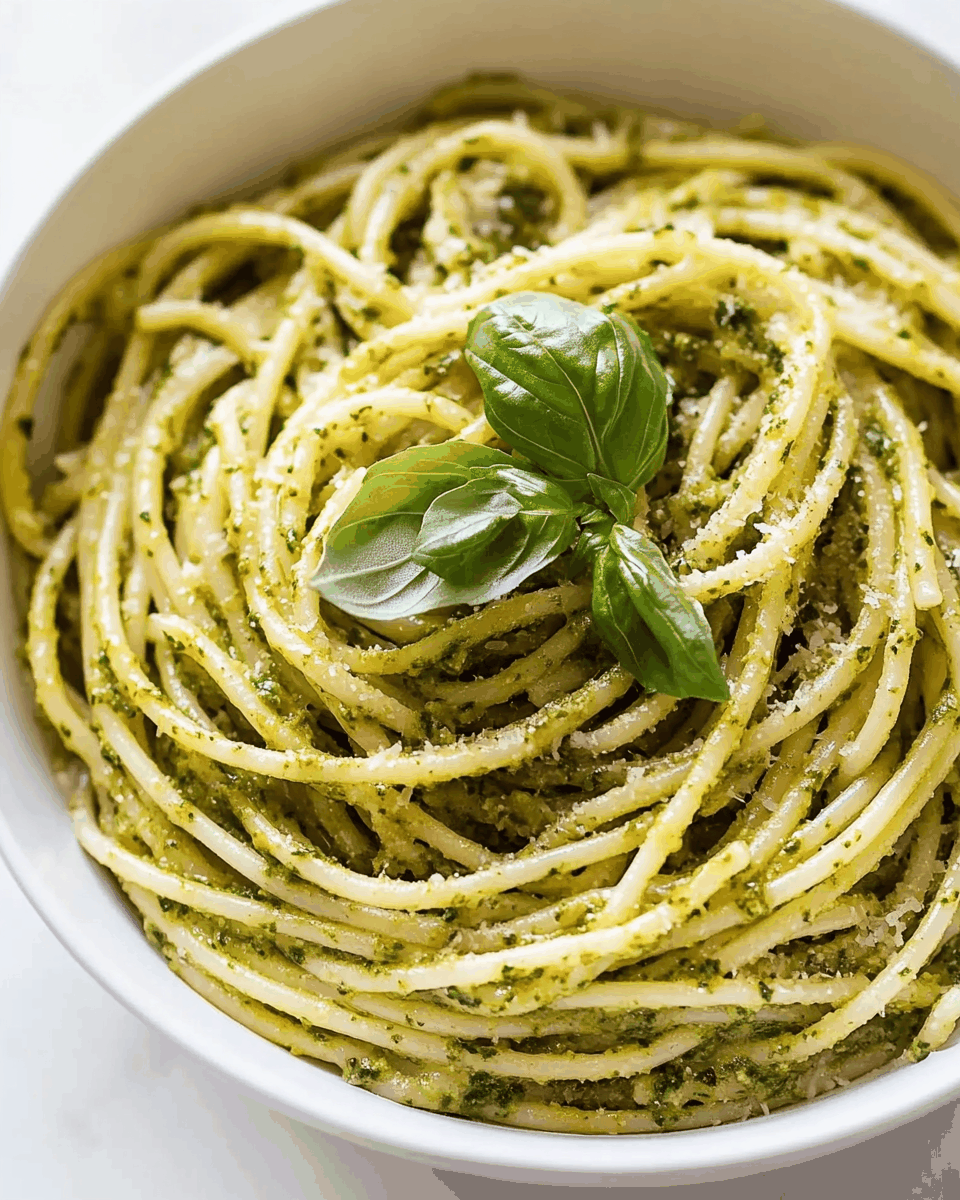
Creating your own pesto pasta is a straightforward process that requires minimal cooking. Here’s a detailed step-by-step guide to help you prepare this delightful dish:
- Start by cooking the pasta. In a large pot, bring salted water to a rolling boil. Add your choice of pasta and cook according to the package instructions until al dente. Reserve about 1 cup of the pasta cooking water, then drain the pasta in a colander and set aside.
- While the pasta is cooking, prepare the pesto sauce. In a food processor, combine the fresh basil leaves, garlic cloves, and pine nuts. Pulse the ingredients until finely chopped, scraping down the sides as necessary to ensure an even blend.
- Once the basil mixture is well combined, add the grated Parmesan cheese. Pulse again until the cheese is incorporated into the mixture.
- With the food processor running, slowly drizzle in the extra virgin olive oil. This will help emulsify the sauce, resulting in a smooth and creamy texture. If the pesto is too thick, you can add a little of the reserved pasta cooking water to reach your desired consistency.
- Season the pesto with salt and freshly cracked black pepper to taste. Remember to taste as you go, as the flavors will develop further once the pesto is mixed with the pasta.
- In a large mixing bowl, combine the drained pasta with the freshly made pesto sauce. Toss gently to ensure that all the pasta is evenly coated. If the sauce seems too thick, add a little more of the reserved pasta water to loosen it up.
- Once the pasta is well coated, you can serve it immediately. If desired, garnish with additional grated Parmesan cheese, halved cherry tomatoes, or a handful of fresh arugula for extra flavor and presentation.
Enjoy your homemade pesto pasta warm, and savor the vibrant flavors and aromas that come from this simple yet exquisite dish.
Tips For Variations:
The beauty of pesto pasta lies in its versatility. Here are some creative ideas to customize the dish according to your preferences or what you have on hand:
- Vegetable Additions: Incorporate seasonal vegetables to add color and nutrition. Consider adding sautéed zucchini, bell peppers, or spinach for a pop of color and flavor. You can also toss in steamed broccoli or peas for added texture.
- Protein Boost: To make the dish more filling, add a protein source. Grilled chicken, shrimp, or roasted chickpeas can enhance the meal’s heartiness while complementing the flavors of the pesto.
- Nut Variations: While pine nuts are traditional, you can experiment with other nuts such as walnuts, almonds, or cashews. Each nut will impart a slightly different flavor and texture to your pesto.
- Herb Alternatives: While basil is the classic choice for pesto, you can explore other herbs as well. Try using arugula for a peppery twist or spinach for a milder flavor. Mixing herbs can create a unique flavor profile.
- Cheese Variations: For a different flavor, consider using Pecorino Romano instead of Parmesan. This cheese offers a sharper taste that can add an interesting dimension to the pesto.
- Gluten-Free Option: If you are looking for a gluten-free option, substitute traditional pasta with gluten-free pasta alternatives. Many brands offer delicious varieties made from rice, quinoa, or lentils.
- Storage Tips: If you have leftover pesto, store it in an airtight container in the refrigerator. To prevent browning, drizzle a thin layer of olive oil on top before sealing. Use it within a week or freeze it in ice cube trays for longer storage.
These variations allow you to get creative with your pesto pasta, ensuring that you can enjoy a different twist on this classic dish each time you make it.
Serving Suggestions:

Serving pesto pasta can be a delightful experience, as the dish offers a canvas for creativity. Here are some serving suggestions to elevate your presentation and enhance the dining experience:
- Plating: Use a large serving bowl or individual plates to present the pasta. Twirl the pasta with a fork or tongs to create a beautiful nest-like shape in the center of the plate. This adds an elegant touch to your presentation.
- Garnishes: Fresh garnishes can make a significant difference in appearance and flavor. Sprinkle additional grated Parmesan cheese on top, and add a few whole basil leaves for a pop of color. A drizzle of high-quality olive oil can also enhance the dish’s richness.
- Accompaniments: Pair your pesto pasta with a crisp salad or a side of garlic bread to create a complete meal. A simple arugula salad with lemon vinaigrette complements the flavors of the pesto beautifully.
- Wine Pairing: Although this article refrains from discussing specific beverages, consider serving your pesto pasta with a refreshing sparkling water or a non-alcoholic beverage that balances the flavors of the dish.
- Seasonal Touches: For a seasonal twist, consider incorporating ingredients that reflect the time of year. In the summer, add fresh cherry tomatoes or grilled corn; in the fall, roasted butternut squash can provide a lovely contrast to the sauce.
- Leftover Makeover: If you have leftovers, consider transforming them into a cold pasta salad. Toss the cold pesto pasta with cherry tomatoes, mozzarella balls, and a splash of lemon juice for a refreshing dish the next day.
These serving suggestions will help you create a memorable dining experience that highlights the flavors and beauty of your homemade pesto pasta.
FAQ:
Can I use store-bought pesto instead of making my own?
Absolutely! Store-bought pesto can save time and still deliver great flavor. Look for high-quality brands that use fresh ingredients for the best results.
How can I make my pesto pasta creamier?
To achieve a creamier texture, consider adding a splash of heavy cream or cream cheese to the pesto sauce before mixing it with the pasta. This will create a richer mouthfeel.
Can I freeze pesto pasta?
While it’s best to freeze pesto separately, you can freeze leftover pesto pasta. Just ensure it’s stored in an airtight container, and consume it within a month for optimal taste.
What pasta shape works best for pesto?
Long pasta shapes like spaghetti or linguine are ideal because they allow the pesto to cling beautifully. However, shorter shapes like fusilli or penne also work well, capturing the sauce in their nooks.
How can I make the dish more colorful?
Add colorful vegetables such as cherry tomatoes, roasted red peppers, or blanched green beans. These not only enhance the visual appeal but also add flavor and nutrition.

Pesto Pasta
Equipment
- Large Pot
- Food Processor
- Mixing Bowl
- Colander
Ingredients
Pasta
- 400 grams Pasta (spaghetti, fusilli, or your favorite shape) Choose a pasta shape that allows the sauce to cling well.
Pesto Sauce
- 2 cups Fresh basil leaves Use young and vibrant leaves for the best flavor.
- 2-3 cloves Garlic Adjust based on your preference for garlic intensity.
- 1/4 cup Pine nuts Lightly toasting them can enhance their flavor.
- 1/2 cup Freshly grated Parmesan cheese Use high-quality cheese for the best flavor.
- 1/2 cup Extra virgin olive oil Choose a good-quality oil for the best flavor.
Seasoning
- Salt To taste, keeping in mind that Parmesan cheese is already salty.
- Freshly cracked black pepper To taste.
Optional Garnishes
- Cherry tomatoes For garnish, adds a burst of sweetness.
- Arugula For garnish, adds a peppery note.
Instructions
- Start by cooking the pasta. In a large pot, bring salted water to a rolling boil. Add your choice of pasta and cook according to the package instructions until al dente. Reserve about 1 cup of the pasta cooking water, then drain the pasta in a colander and set aside.
- While the pasta is cooking, prepare the pesto sauce. In a food processor, combine the fresh basil leaves, garlic cloves, and pine nuts. Pulse the ingredients until finely chopped, scraping down the sides as necessary to ensure an even blend.
- Once the basil mixture is well combined, add the grated Parmesan cheese. Pulse again until the cheese is incorporated into the mixture.
- With the food processor running, slowly drizzle in the extra virgin olive oil. This will help emulsify the sauce, resulting in a smooth and creamy texture. If the pesto is too thick, you can add a little of the reserved pasta cooking water to reach your desired consistency.
- Season the pesto with salt and freshly cracked black pepper to taste. Remember to taste as you go, as the flavors will develop further once the pesto is mixed with the pasta.
- In a large mixing bowl, combine the drained pasta with the freshly made pesto sauce. Toss gently to ensure that all the pasta is evenly coated. If the sauce seems too thick, add a little more of the reserved pasta water to loosen it up.
- Once the pasta is well coated, you can serve it immediately. If desired, garnish with additional grated Parmesan cheese, halved cherry tomatoes, or a handful of fresh arugula for extra flavor and presentation.

